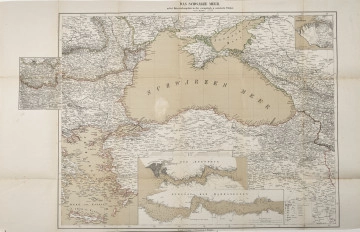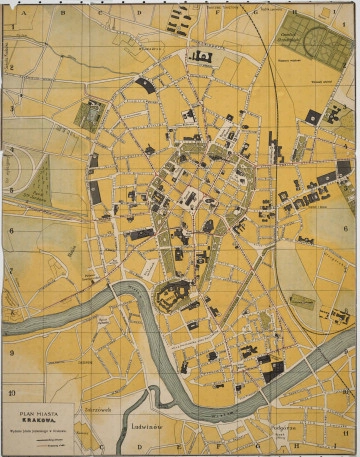
Plan des Fouilles de Pompeia
1826
Castle Museum in Łańcut
Part of the collection: Cartography
The 19th century was only a time of the industrial revolution, scientific and technical progress, and development of the state administration, but also the rise of interest in travelling the continent and beyond it. In the so-called “Century of Steam”, there was a rapid increase in the population of cities. The first cities with a population of a million appeared in Europe. This resulted in greater demand for detailed city plans and larger areas included as territorial administrative units. This map shows the German-French border region of Alsace-Lorraine and the territories of Belgium and Luxembourg that border it. In the upper right corner, there is an enlargement (detailed map) of the Belgian-French border. The map in the scale of 1 : 1,000,000 was published by Verlag & Klasing in Bielefeld and Leipzig, active between 1833 and 1954. The map is foldable and bound in a paper cover. The Counts Potocki – like most Polish aristocrats – liked to travel, hence a large collection of plans and maps has survived. Łukasz Chrobak
Author / creator
Object type
Cartography
Technique
flat print
Material
paper, paint
Creation time / dating
Owner
Castle Museum in Łańcut
Identification number
Location / status

Cucinello et Blanchi
1826
Castle Museum in Łańcut

Handke, Friedrich
1877
Castle Museum in Łańcut

unknown
1913
Castle Museum in Łańcut
DISCOVER this TOPIC
Museum of King Jan III's Palace at Wilanów
DISCOVER this PATH
Educational path
0/500

We use cookies to make it easier for you to use our website and for statistical purposes. You can manage cookies by changing the settings of your web browser. More information in the Privacy Policy.
We use cookies to make it easier for you to use our website and for statistical purposes. You can manage cookies by changing the settings of your web browser. More information in the Privacy Policy.
Manage cookies:
This type of cookies is necessary for the website to function. You can change your browser settings to block them, but then the website will not work properly.
WYMAGANE
They are used to measure user engagement and generate statistics about the website to better understand how it is used. If you block this type of cookies, we will not be able to collect information about the use of the website and we will not be able to monitor its performance.